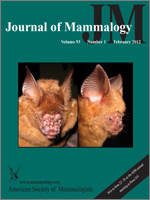Understanding how environmental factors affect activity, number, and spatial distribution of bats in an area is necessary for interpreting capture rates and assessing abundance. Over a 34-year period, we examined the relationship between amounts of precipitation and activity of bats along a canyon floor in the San Mateo Mountains of New Mexico in the southwestern United States. For 1 night during each of 19 summers, we used identical sampling techniques to monitor this assemblage of insectivorous bats. Years included droughts with minimal surface water and wet years with abundant surface water in the canyon. Marked differences in available drinking water resulted in striking differences in yearly captures of bats, with a 30.8-fold difference between the fewest and most captures (6 versus 185 adults). Capture rates increased with less precipitation before sampling. In the 3-decadal period, precipitation accounted for 66% of the variation in capture rates, providing support that bats concentrate around accessible water to drink when surface water is scarce. Captures also were influenced by relative humidity on nights of sampling. From 1971 to 2005, we detected no change in species composition in this bat assemblage of 8 species, and after accounting for effects of precipitation, we detected no declines in population size for the 2 most common species, the long-eared myotis (Myotis evotis) and long-legged myotis (M. volans). Our study demonstrates the importance of long-term data sets to help elucidate patterns of variability in capture data and highlights the importance of how yearly variation in climate affects the behavior and ecology of bats.
How to translate text using browser tools
1 February 2012
Effects of environmental factors on capture rates of insectivorous bats, 1971–2005
Kenneth N. Geluso,
Keith Geluso
ACCESS THE FULL ARTICLE

Journal of Mammalogy
Vol. 93 • No. 1
February 2012
Vol. 93 • No. 1
February 2012




